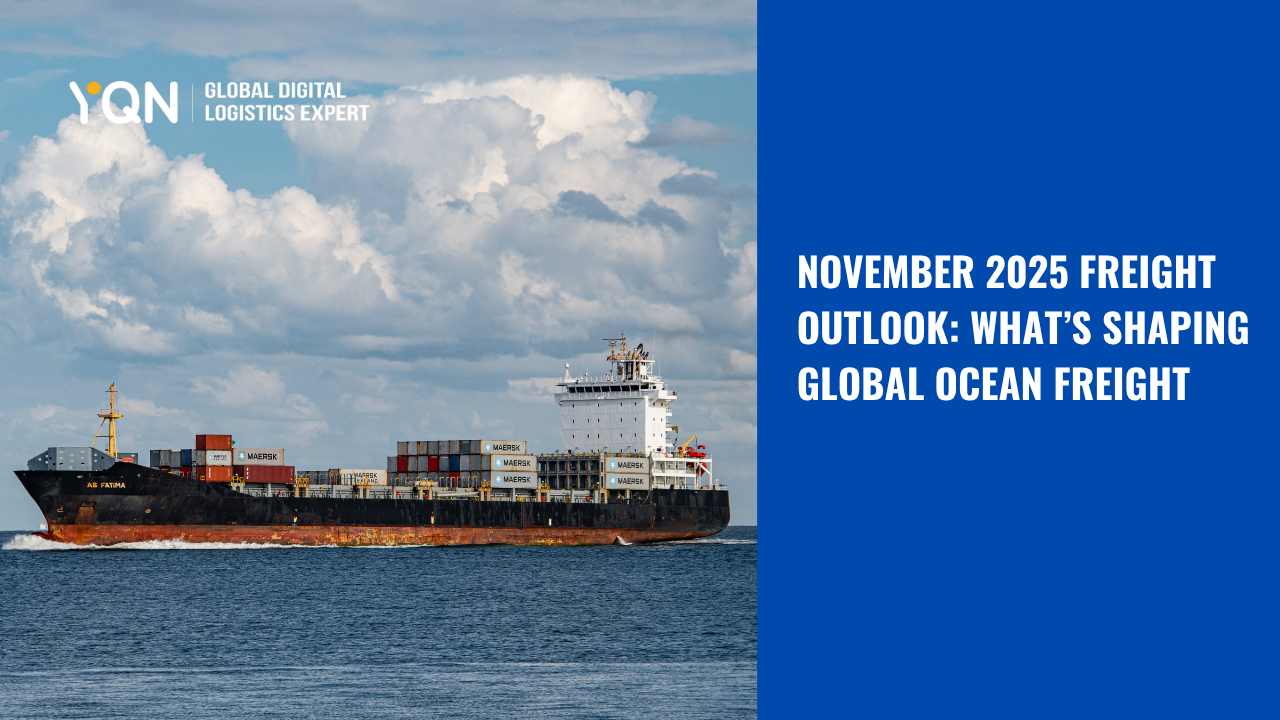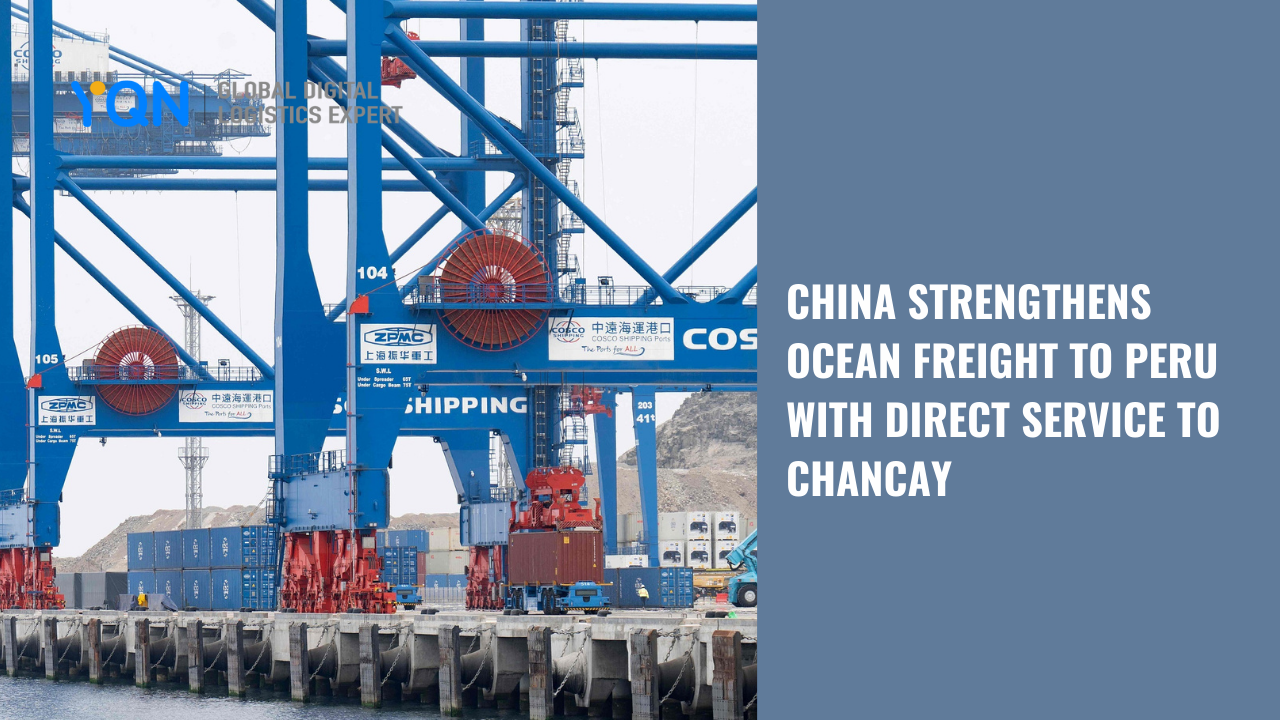October 2025 Freight Outlook: What’s Shaping Ocean Freight
YQN Operation Team | 2025.10.10 | info@yqn.com
As October unfolds, several developments are reshaping ocean freight and global shipping. From ceasefire progress in the Red Sea to the USTR-proposed fee for Chinese ships, and new freight surcharges announced by major carriers, these changes are influencing costs, capacity, and trade flows across key global routes.
This month’s logistics news highlights what freight forwarders and shippers need to watch closely.
1. Gaza Ceasefire and the Red Sea Route
News of ceasefire developments has markets watching for a possible return to the Red Sea/Suez routing; if the route fully reopens and stays stable, capacity will rise and overall freight pressure could ease over months. But carriers are cautious — route re-routing decisions will lag confirmed security improvements, so near-term premium routing around Africa may persist. That means capacity relief is possible later in Q4, not instantly.
Since late 2023, Yemen’s Houthi rebels have repeatedly attacked commercial vessels in the Red Sea, claiming retaliation for Israel’s military actions in Gaza. These attacks prompted major shipping lines to suspend Suez Canal transits, opting instead for longer voyages around the Cape of Good Hope. The disruption has added weeks to transit times and driven up fuel and insurance costs, reshaping global shipping routes and ocean freight pricing through 2024 and into 2025.
Why This Matters for Logistics & Global Trade
The Red Sea corridor handles over 12% of world trade. Disruptions there directly impact freight forwarding schedules and vessel rotations. Forwarders should continue advising clients on longer lead times and monitor carrier updates for capacity recovery signs.
2. U.S.–China Port Fees
Starting October 14, 2025, the U.S. will impose port entry fees on vessels built, owned, or operated by Chinese entities, as well as foreign-built vehicle carriers. These fees range from $50 to $140 per net ton. According to President Trump, the fees imposed on ships built, owned or operated by Chinese entities will help pay to revive U.S. shipbuilding.
Meanwhile, China's Transport Ministry announced that on October 14, it will levy a Special Port Fee on ships owned, operated, or built in the U.S. The fee will be applied per voyage in phases, with rates increasing annually, starting at CNY 400 per net ton for vessels calling at Chinese ports. Forwarders and carriers should factor this into cost planning and route decisions.
"It is clearly discriminatory and severely damages the legitimate interests of China's shipping industry, seriously disrupts the stability of the global supply chain, and seriously undermines the international economic and trade order," the Chinese ministry said.
Forwarders and carriers should factor this into cost planning and route decisions.
Why This Matters for Logistics & Global Trade
For freight forwarding companies and vessel operators, these dual fees could elevate voyage costs and alter routing economics. Shippers trading between China and the U.S. may face freight surcharges or longer-term pricing adjustments as both nations implement the new measures.
3. Far East–Europe Rate Adjustments by Hapag-Lloyd
Hapag-Lloyd will implement a General Rate Increase for shipments from the Far East to Europe, effective October 15, 2025, applying to both Dry and Reefer containers. The new rates are USD 1,200 for a 20-foot Dry container and USD 2,000 for both 40-foot Dry and 40-foot High Cube containers.
Why This Matters for Logistics & Global Trade
This GRI signals that carriers are maintaining pricing discipline amid tight capacity. Forwarders should prepare for cost adjustments and proactively update clients on upcoming freight surcharges for Asia–Europe trade.
Conclusion: A Pivotal Month for Freight Forwarders
October marks a turning point for global shipping and ocean freight operations. Ceasefire optimism could eventually bring relief through restored Red Sea access, yet the U.S.–China fee measures and seasonal freight surcharges may counterbalance those gains.
For freight forwarding professionals, the focus should remain on agility — monitoring carrier advisories, diversifying routes, and maintaining transparency with clients about rate and schedule volatility.
As global trade rebalances amid shifting policies and seasonal demand, proactive planning will define who stays competitive in the months ahead.










